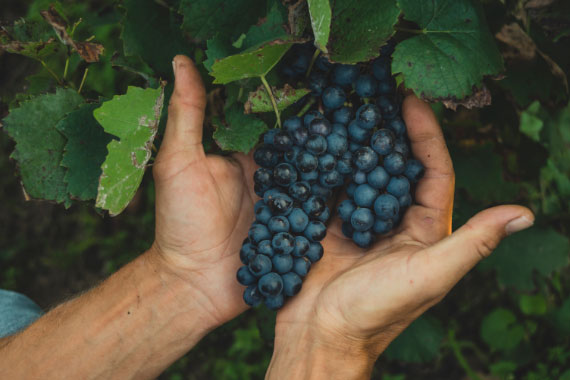Much more than simple protection, they can provide invaluable information about the wine itself, its origin and its quality.
In this article, we invite you to delve into the world of decoding wine capsules and discover the secrets they hold.
Types of wine capsules
Wine capsules, also known as capsules-congé or capsules représentatives de droit (CRD), are made up of two components. The first is the aluminum layer that covers and protects the top of the bottle, in other words, the neck. The second element is the fillet, located on the top of the bottle and containing administrative information about the bottler.
There are different types of wine bottle caps used to seal wine bottles.
The most common are tin or aluminum capsules, but plastic or even wax capsules are also available. Each type of capsule has its own characteristics and can give clues as to the style and age of the wine.

Indications of quality and style
Some wine capsules provide indications of the quality and style of the wine contained in the bottle. For example, a capsule emblazoned with an emblem or medal may indicate an award-winning wine or one recognized for its quality.
You can also find the bottler’s department on the circumference of the capsule.
A letter also indicates the bottler’s status:
- R or Récoltant: the bottler is also the wine producer, and is responsible for the entire production chain (harvesting, vinification and bottling).
When this letter appears on the capsule, you know that all the wine-making stages are carried out in the same place, and this is often a sign of superior wine quality! In fact, it offers you complete traceability, a guarantee of quality, an authentic expression of terroir, greater diversity and originality, as well as a more direct relationship with the producer. These combined advantages can contribute to a more rewarding and satisfying experience!
Univitis is a harvesting producer: from conception to sale, the cooperative winery designs and manages all stages of production: vineyard, harvest, vinification, ageing, bottling and sale of its wines.
You’ll find the letter R on all Univitis wine capsules!
- N for Non-Récoltant, or Négociant: the bottler has bought from a producer before bottling, not produced it.
- E for Entrepositaire agréé: this indicates that a wine merchant, cooperative winery or major brand has purchased the grapes or wine from another party and marketed it under its own name.
The color of the capsule also reflects the style of the wine:
- Green capsules
This color designates still or sparkling wines. It includes Appellations d’Origines Contrôlées (AOC) and Vins Délimitées de Qualité Supérieure (VDQS).
- Blue capsules
These capsules refer to vins de pays and vins de table.
- Orange capsules
These correspond to vins doux naturels (such as Grand Roussillon or Maury).
Orange wine capsules are also used for liqueur wines, such as Port or Pommeau de Normandie.
- Red capsules
Also known as “rouge lie-de-vin” capsules, they can be chosen to replace blue and green capsules, except for champagnes and sweet wines.

Identification of origin and producer
In addition to information about the bottler, wine capsules also have a legal role: they indicate that the producer has paid alcohol taxes to the DGDDI (Direction Générale des Douanes et Droits Indirects).
On many wine capsules, you can find information on the origin of the wine and the producer.
Mandatory legal information, such as the winery’s name or logo, can be engraved or printed on the capsule. This allows wine lovers to quickly recognize the wine’s origin and become familiar with well-known producers!

Witnesses to authenticity and preservation
Wine bottle caps also play a crucial role in wine preservation! They hermetically seal the bottle and protect the wine from oxidation and contamination.
The integrity of the wine capsule can therefore be an indicator of the wine’s authenticity and proper preservation.

Capsule evolution
Over the years, wine capsules have evolved both aesthetically and functionally.
Today, many wine producers see the wine bottle capsule as an element of branding and visual identity. Some capsules are veritable works of art, with intricate patterns and detailed engravings!
What’s more, cutting-edge technologies have been developed to improve sealing and facilitate bottle opening.
And with this in mind, we’ve pre-cut our Grand Théâtre range bottles to make them easier to open!

The capsule on a wine bottle is more than just a lid. It contains precious clues to the origin, quality and style of the wine it protects!















